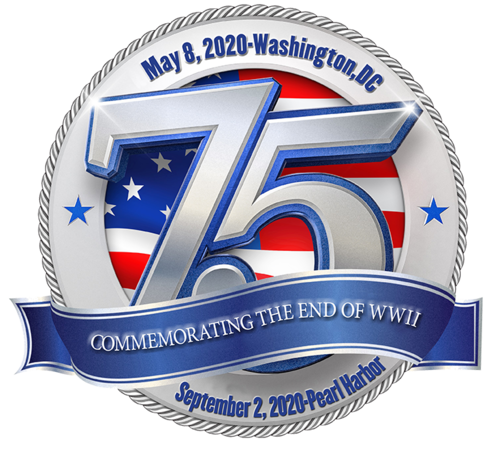A Divided America and Japan’s Growing Military
Isolationism versus Interventionism
As fighting raged in Europe and Asia, many Americans felt the nation should defend its own hemisphere and not takes sides…isolate itself from conflict in Europe and Asia. Some Americans felt that an Axis victory (Germany Italy & Japan) would post grave peril in the world, and that helping by intervening embattled democracies was crucial to America’s security. President Roosevelt emphasized that he did not indent to involve the nation in Europe’s war.
““There is a risk in any course we may take. But I deeply believe that the great majority of our people agree that the course I advocate involves the least risk now and the greatest hope for world peace in the future.””
Cash and Carry
The neutrality acts of the late 1930s sharply restricted the export of U.S. arms and strategic materials to warring nations. For example, the Neutrality Act of 1937 allowed nations, at the discretion of the President, to acquire any items except arms from the United States, provided that they immediately paid for such items and carried them on non-U.S. ships. This “cash-and-carry” policy was engineered by President Franklin Roosevelt to assist Great Britain and France in their fight against Hitler’s Germany. Roosevelt did grant an exception that allowed British ships to carry U.S. weapons to China.
This image depicts the USS Arizona as she was in the 1920s. Note the birdcage mast and range clock over the bridge.
[ Click to Enlarge ]
A Growing Military Influence in Japan
The military used its power to dominate government agencies and citizens. Perhaps the most important factor that enabled the military dominance, however, was grassroots militarism. The glorifying of war dead and promotion of selfless sacrifice, coupled with fear of social ostracism, served as powerful motives for otherwise unwilling people to support the war effort.
Japanese zero fighters warm up their engines for launch. Lead plane is Lt. Saburo Shindo’s Zero fighter on the Akagi’s flight deck.
[ Click to Enlarge ]
““In Japan is it not so important whether a Premier has the approval of the political parties. What really matters is whether he is endorsed by the army.””
US / Japan Relations
Tensions had been building for years between the U.S. and Japan, which relied heavily on imports of American oil and steel. Even before World War I (when the U.S. and Japan were allies), the two nations emerged as rival powers in the Pacific. In the 1930s, Japan’s imperialist expansion and the rise to power of its militarist exacerbated the rift. The United States, seeing to curb those ambitions, embargoes shipments to Japan of aircraft, scrap metal, iron ore and steel, and oil.
In September 1940, Japan signed the Tripartite Pact with Germany and Italy and invaded French Indochina. A few months later, Japan and Russia signed a non-aggression treaty, removing the Soviet Union as an obstacle to Japanese expansion in Asia. In July 1941, Roosevelt froze all Japanese assets in the United States. Negotiations between the U.S. and Japan continued with no progress.
Japan regarded American sanctions, especially the oil embargo, as a threat to its war effort in China and to the survival of the Japanese Empire.
Japanese ambassador Kichi Saburo Nomura and special envoy, Saburo Kurusu, leave the white house in late November 1941.
[ Click to Enlarge ]
““If we are careless, these resources (in Manchuria and China) will end up in English or American hands. Talking about “international morality and allowing others to get the jump on us will give Japan the short end of the stick. In our view, taking North China is vital to Japan. And now is the best opportunity.””
Between Two Jaws
By 1940, America faced a double threat overseas. Bent on controlling much of Asia, Japan threatened America’s economic interests there and its long-standing relationships with the Philippines and China. German forces had swept across Europe and were now attacking America’s close ally Great Britain.
Germany, Italy and Japan had signed an alliance, sparking fears of worldwide conquest by these three Axis powers. With Germany on one side and Japan on the other, U.S. Senator Claude Pepper fumed that “the vast pincer movement begins to crush us between its two jaws.”
The U.S Pacific Fleet’s relocation to Hawaiian waters brings conflicting reactions. Is it a restraint on Japan or creating a vulnerable target? President Roosevelt told Admiral James O. Richardson, Commander-in-Chief of the U.S. Pacific Fleet that retaining the fleet in Hawaiian waters after it concluded large-scale maneuvers in the spring of 1940 would “exercise a restraining influence on the actions of Japan.”
American carriers: This photo was taken in 1932 off Waikiki with Diamond Head in the background. USS Saratoga (foreground), USS Lexington (background).
[ Click to Enlarge ]
““I had not requested that the fleet remain in Hawaiian waters, and there was no logical reason for me to make such a request. This was the second time the Department had put the Commander-in-Chief of the United States Fleet in a completely false position … I did not resent being told to do something by orders from above, but I did resent being told how to do it, particularly when the ‘how’ made a perfect ‘nitwit’ out of me.””

